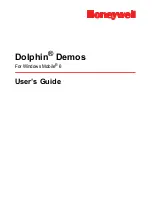
Chapter 9: 802.1x Port-based Network Access Control
108
Section I: Using the Menus Interface
802.1x Port-based Network Access Control Overview
802.1x Port-based Network Access Control (IEEE 802.1x) is used to
control who can send traffic through and receive traffic from a switch port.
With this feature, the switch will not allow an end node to send or receive
traffic through a port until the user of the node logs on by entering a
username and password.
This feature can prevent an unauthorized individual from connecting a
computer to a switch port or using an unattended workstation to access
your network resources. Only those users to whom you have assigned a
username and password will be able to use the switch to access the
network.
This feature must be used with the RADIUS authentication protocol and
requires that there be a RADIUS server on your network. The RADIUS
server performs the authentication of the username and password
combinations.
Note
RADIUS with Extensible Authentication Protocol (EAP) extensions
is the only supported authentication server for this feature.
Following are several terms to keep in mind when using this feature.
Supplicant - A supplicant is an end user or end node that wants to
access the network through a switch port. A supplicant is also referred
to as a client.
Authenticator - The authenticator is a port on the switch that prohibits
network access by a supplicant until the network user has entered a
valid username and password.
Authentication server - The authentication server is the network device
that has the RADIUS server software. This is the device that does the
actual authenticating of the user names and passwords from the
supplicants.
The AT-GS950/16 and AT-GS950/24 switches do not authenticate the
usernames and passwords from the end users. Rather, they act as an
intermediary between a supplicant and the authentication server during
the authentication process.
Summary of Contents for AT-S79
Page 6: ...Contents 6 ...
Page 10: ...Tables 10 ...
Page 22: ...22 Section I Using the Menus Interface ...
Page 28: ...Chapter 2 Getting Started with the Menus Interface 28 Section I Using the Menus Interface ...
Page 64: ...Chapter 5 Port Trunking 64 Section I Using the Menus Interface ...
Page 70: ...Chapter 6 Port Mirroring 70 Section I Using the Menus Interface ...
Page 94: ...Chapter 7 Virtual LANs 94 Section I Using the Menus Interface ...
Page 106: ...Chapter 8 Quality of Service QoS 106 Section I Using the Menus Interface ...
Page 118: ...Chapter 9 802 1x Port based Network Access Control 118 Section I Using the Menus Interface ...
Page 124: ...Chapter 10 RADIUS Authentication Protocol 124 Section I Using the Menus Interface ...
Page 134: ...134 Section II Using the Web Browser Interface ...
Page 166: ...Chapter 15 Port Configuration 166 Section II Using the Web Browser Interface ...
Page 172: ...Chapter 16 Port Trunking 172 Section II Using the Web Browser Interface ...
Page 176: ...Chapter 17 Port Mirroring 176 Section II Using the Web Browser Interface ...
Page 186: ...Chapter 18 Virtual LANs 186 Section II Using the Web Browser Interface ...
Page 192: ...Chapter 19 Quality of Service QoS 192 Section II Using the Web Browser Interface ...
Page 204: ...Chapter 23 Management Software Updates 204 Section II Using the Web Browser Interface ...
Page 208: ...Appendix A AT S79 Software Default Settings 208 ...
















































